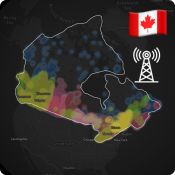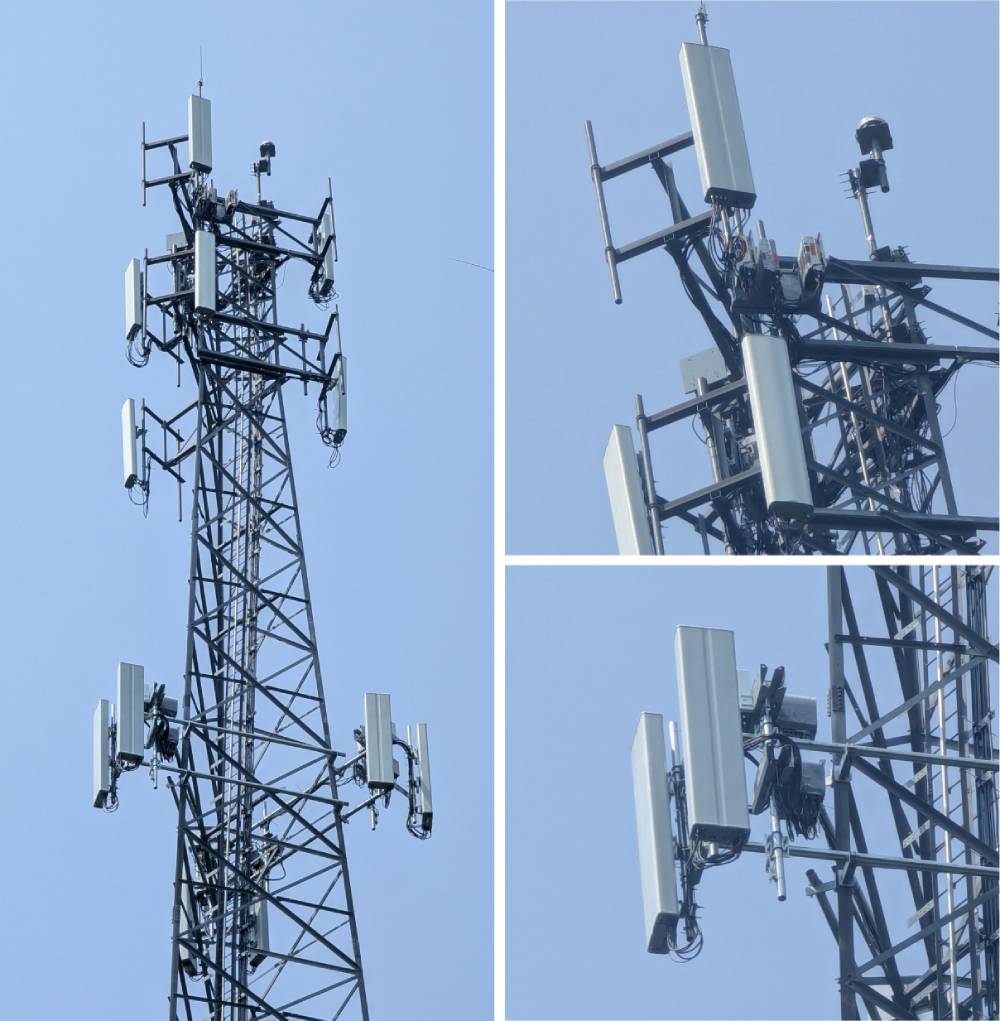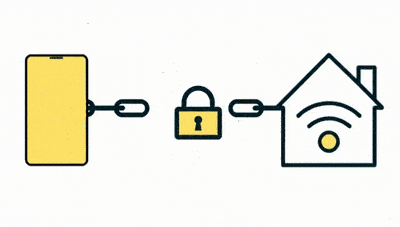Cell Phone coverage Maps and Cellular Tower Network in Canada
Important to know about cellular Tower networks

Cell phone coverage in Canada can sometimes be a matter of survival. That’s why we’ve created this comprehensive guide with everything you need to know on the subject. Use the interactive map above to locate the nearest towers to any address, or scroll down to learn all about cellular towers and networks.
Bell’s Cellular Coverage
(Virgin, Lucky mobile, PC Mobile)Go to provider’s page for plans and more

Roger’s Cellular Coverage
(Fido, Chatr, Shaw)Go to provider’s page for plans and more

Telus’ Cellular Coverage
(Koodo, Public Mobile)Go to provider’s page for plans and more

Sasktel's Cellular Coverage
(Lum)Go to provider’s page for plans and more instruction

Freedom's Cellular Coverage
Go to provider’s page for plans and more

Eastlink's Cellular Coverage
Go to provider’s page for plans and more

Videotron's Cellular Coverage
(Fizz, Freedom Mobile)Go to provider’s page for plans and more

Cogeco's Cellular Coverage
Go to provider’s page for plans and more

Why is my phone reception weak despite being close to an antenna?
Not all towers and signals are the same. Your signal quality depends on several factors, such as the type of tower, its location, the number of users connected at any given time, the direction it faces, and physical obstacles like mountains or tall buildings. Another key factor is your device, which can also impact the quality of your service. If you consistently experience poor cell phone reception where you live or spend a significant amount of time, to the point of frustration, we recommend using Planhub's coverage map to find a plan with a different provider that has multiple cellular towers within a 40 km range of your target location. Simply enter an address, and the coverage map will show the nearby cellular towers.
Are 5G tower dangerous?
No.
5G towers have not been shown to be dangerous to people. They use the same type of radiofrequency (RF) energy as 4G and emit non-ionizing energy, which operates at a wavelength that is even safer than that of a remote control. Additionally, Health Canada requires that telecommunications networks and companies in Canada adhere to Safety Code 6 (SC6), which sets a limit with a 50-fold safety margin below any known electromagnetic frequency (EMF) exposure level associated with potential physical effects.
What does a cell tower look like?
Cellular towers around the world come in different sizes and shapes. In some countries, towers are disguised as trees to blend into urban areas. In Canada, most cell phone towers are similar in construction to lattice electrical towers, made from crisscross steel patterns that have proven to be efficient in the context of North American four-season weather. As a reference, below are pictures of a cellular tower from Bell, taken by Planhub's team in the municipality of Saint-Aimé-du-Lac-des-Îles near Mont-Laurier in the province of Quebec.

How to block cell tower radiation?
Cell tower radiation is difficult to block completely since there are so many of them. Cell towers emit non-ionizing energy, which has not been shown to be harmful to humans. In fact, the radiofrequency (RF) emitted by cell towers is lower than that of a remote control. Additionally, Health Canada mandates that cell towers comply with Safety Code 6 (SC6), which sets exposure limits with a 50-fold safety margin below any known electromagnetic frequency (EMF) exposure level linked to physical effects.
If you're concerned, there are a few steps you can take to reduce your exposure. For instance, you can put your mobile device on airplane mode, which stops it from emitting RF signals as it disconnects from the tower. Using speakerphone or earphones instead of holding the phone to your ear can also reduce exposure. Try not to keep your phone directly against your skin, like in your bra or pocket. Texting instead of speaking, and using a phone with a low Specific Absorption Rate (SAR), can further limit your exposure. You can also reduce the length of your calls.
Additionally, it's important to be aware that when your phone has to work harder to connect to a signal, such as when you have very few bars, it emits more radiation.
How do you find cell tower locations?
To find cell phone towers, there are plenty of options online, but we highly recommend PlanHub's coverage map at the top of this page. Click on the "?" button for a quick tutorial on how to use the tool. We confidently believe that PlanHub's cellular tower coverage map is the most comprehensive tool available for visualizing all Canadian mobile provider networks at once, as we've done extensive work to ensure that all providers and MVNOs are included. Alternatively, each mobile provider has its own proprietary coverage map on their website that you can consult directly.
Where is the nearest cell tower?
To find the nearest cellular tower, the coverage map at the top of this page on Planhub is your best option, as it consolidates all Canadian mobile provider networks. If you’re unsure how to use the map, click the “?” icon for a quick tutorial. Here’s a simple step-by-step guide:
1. Enter the civic address of the Canadian location where you want to check cell phone coverage.
2. Visually identify the closest tower on the map based on the address entered.
How far can a cell tower’s signal reach?
The range of a cell tower largely depends on the type of signal it transmits. In Canada, consumer cell networks use a mix of 4G and 5G technologies. A typical 4G tower has a coverage range of about 20 km (or a 10 km radius). In contrast, 5G signals, which operate at higher frequencies, have a shorter range. A 5G tower using high-frequency waves typically covers a distance of around 300 meters (or a 150-meter radius) to deliver ultra-fast connection speeds. Naturally, the more obstacles there are in the environment, the weaker the signal strength will be.
How can I find out which cell tower I’m connected to?
For Android:
1. Use a Dedicated App: Download an app like Network Cell Info Lite or OpenSignal from the Google Play Store. These apps provide accurate details about the tower you’re connected to, including its location and signal strength
For iPhone:
1. Field Test Mode: Open the phone’s dialer and enter 3001#12345# and press call. This will activate “Field Test Mode,” where you can find the cell tower information under “Serving Cell Info.”
For all devices:
Carrier Services: Some mobile carriers provide tools through their apps or websites where you can check which cell tower you’re connected to.
Online Coverage Maps: You can use online tools like PlanHub’s coverage map at the top of this page to locate nearby towers and get an idea of which one might be serving you.
What is a safe distance from a 5G cell tower?
The safe distance from a 5G cell tower primarily depends on the power and frequency at which the tower operates. In Canada, the regulations are set by Safety Code 6, which ensures that radiofrequency (RF) exposure from cell towers, including 5G, remains well within safe limits. The guidelines provide a 50-fold margin of safety, meaning that even at distances close to the tower, there is no significant risk to health.
Small 5G cell towers typically cover shorter ranges (around 300 meters), and the exposure levels drop significantly as the distance from the tower increases. Cell towers are also positioned high above ground to minimize direct exposure. Health Canada has conducted extensive research and continues to monitor scientific studies, consistently finding no adverse health effects from the low-level RF exposure produced by 5G towers in compliance with Safety Code 6.
Overall, being within 150 to 400 meters of a 5G tower is generally safe, thanks to the stringent regulations in place that protect public health.Overall, being within 150 to 400 meters of a 5G tower is generally safe, thanks to the stringent regulations in place that protect public health.
FAQ
Still have questions about our coverage maps? Our FAQ section will help you learn more!



























